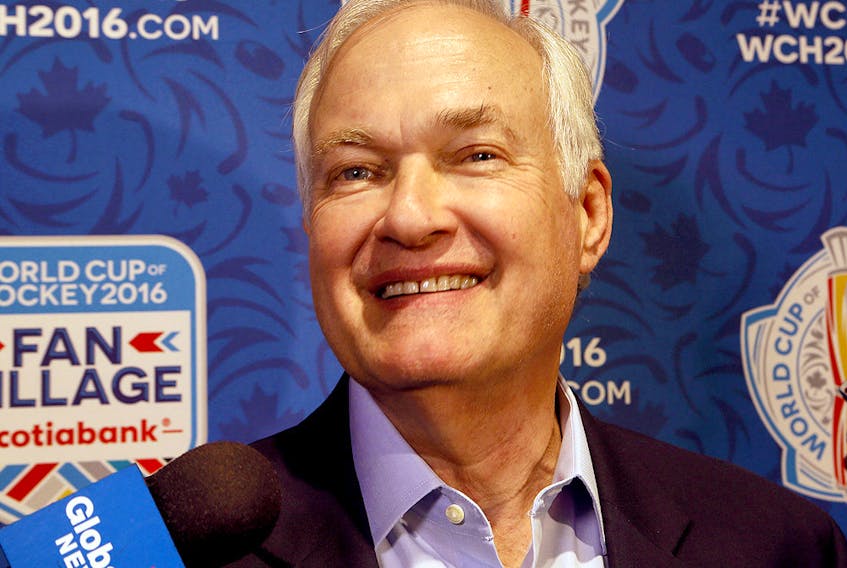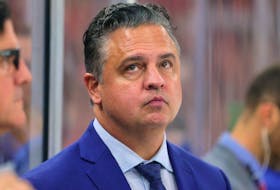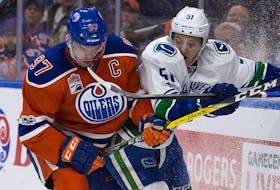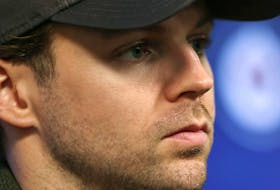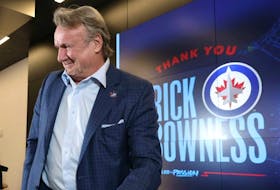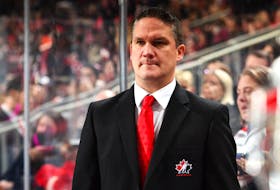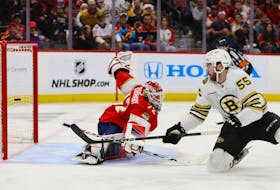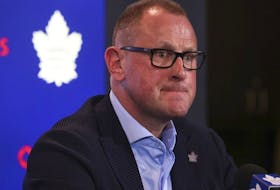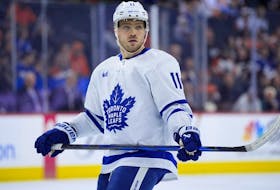OAKVILLE, Ont. — It might be a tad simplistic to suggest that the only reason why P.K. Subban and Patrick Marleau were traded last weekend was because the salary cap didn’t rise as much as everyone thought it would.
Certainly, it didn’t help.
As the head of the NHL Players’ Association, Don Fehr knows this. The salary cap escalator was believed to be a hot topic amongst the union last week.
The NHLPA had the chance to use the salary cap escalator to increase the spending limit by 5%. Instead, the players opted for a 0.5% rise, which amounted to the upper-limit of the cap going from $79.5-million to just $81.5-million.
On the plus side, more money went into the players’ pockets, because a lower salary cap means lower escrow payments. On the negative side, it means there is not as much money to go around for teams as there could have been.
As such, Subban and Marleau were victims of salary dumps, with Subban and his $9 million cap hit dealt to New Jersey in exchange for a pair of prospects and two second-round draft picks, while Marleau and his $6.25 million cap hit had to be packaged with a first-rounder for Carolina to accept.
The real fallout, however, could occur on July 1, when the agency period begins and players suddenly find themselves waiting by the phone for offers that are lower than they initially hoped.
“Obviously, we don’t know anything about what the player market is going to be like for another two to three weeks, and then we’ll have a clear idea,” Fehr said during the NHLPA’s annual golf tournament at Glen Abbey on Thursday.
“The question as to where it actually landed, hopefully there will be enough fluidity in the system and it will work. But setting the cap on an ongoing basis is a difficult proposition, especially in an era where we’ve had high escrow.”
Under the terms of the collective bargaining agreement, the owners and players divide hockey-related revenue right down the middle. If player salaries exceed that 50-50 split, a percentage is withheld in escrow to make the owners’ share even.
For the players, it means they don’t actually earn the amount written in their contract. It’s why the NHLPA decided to keep the cap lower this year, in hopes that their current salaries will be worth more.
In many ways, it was a warning shot to the owners heading into the next round of negotiations.
Escrow is a big issue for the players.
Bigger than participation in the Olympics or defining hockey-related revenue or getting rid of entry-level contracts. The union has the option of opting out of the current CBA on Sept. 19. And it’s clear that unless something is done about escrow, we could be headed towards another lockout.
“When we get into significant bargaining with the NHL, that will be one of the issues that will come up, because it’s intimately related to the escrow issue,” said Fehr, who later added: “Everybody has known for years now that escrow is going to be an issue with the way it’s developed.”
When asked where negotiations with the NHL were at this point, Fehr simply said: “Ask me around August 15 and I’ll have a better idea.”
In other words, there’s tons of time before either side will come to the table with something resembling a serious offer.
“We’ve had a series of — for lack of a better word — informal discussions,” said Fehr. “Those are ongoing. They haven’t gone to the stage of formal exchanges of proposals or anything like that. But they’ve been helpful.”
‘PERFECT WORLD’ INCLUDES OLYMPICS, WORLD CUP
Don Fehr was wearing a white 2016 World Cup golf shirt on Thursday, but he insisted he wasn’t trying to send a message regarding the international calendar.
“It was clean,” the NHLPA head joked. “I’m a bachelor up here (in Toronto). You do what you can.”
That being said, Fehr is optimistic that we will see another World Cup in the next two years, as well as a return to the Olympics after that.
“In a perfect world, I’d like to see (the World Cup) as soon as February 2021,” he said. “The next logical time would be September 2021 or the Olympics in 2022.”
OFFER SHEETS: ‘WE’LL KNOW IN DUE COURSE’
The period for signing RFAs to offer sheets is officially open, but Fehr didn’t sound hopeful that any would come.
After all, it’s been six years since we last saw one, mostly because the rules put in place — giving up as many as four first-round draft picks — discourages it.
“You have to understand, that’s what the owners want. Nobody wants competition for their younger star players,” said Fehr. “What has always been interesting to me is this: the owners have a desire to limit negotiating any way they can because they believe accurately that it holds salaries down. And so what you have is a series of provisions built into the agreement, mostly compensation and the right of first refusal, which are effectively inhibitive.
“There are some people that say we’ll see some this year. We’ll know that in due course, not very long from now.”
HARD CAP UNLIKELY
Could the NHLPA try to negotiate a hard cap in the next CBA? Not a chance, said Fehr, although it would be ideal.
“I lived without a cap for a long, long time,” he said. “And in a perfect world, that’s what you would likely see. Obviously, that is not something the NHL owners have indicated an interest in.”
twitter.com/Michael_Traikos
Copyright Postmedia Network Inc., 2019

